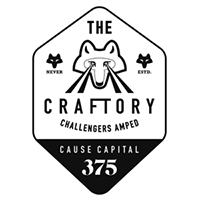Zippy, Lithe and Disposable
Why turning new product development on its head is the challenger way
Back in the inebriated days of 2003, when Yahoo ruled search and Myspace was all the rage, technology products were mostly developed like the Pyramids of Giza: grand designs springing from a founders’ visionary foresight, long in planning and epic in the build. In those days, Adobe might release a new version of Photoshop every 18 months, to great fanfare, and web agencies sold corporates their development services under the maintenance-friendly promise of “launch and forget”. Fast forward to the present, and it’s widely accepted that grand designs and waterfalls are not the way to build technology products that consumers love. In the labs of the world’s great tech companies, user discovery has taken the place of vision. Grand reveals have given way to weekly or even daily drops. Iteration has replaced certainty. And no-one is afraid to pivot on a penny. Remarkably, the same is emerging as the knock-out model for challenger brands in consumer goods - yielding crafty insurgent minnows a huge advantage over the supertanker inflexibility of conventional Big Business.
Launching a new consumer product is, by design, a heavily front-loaded affair for the Unilevers, Nestlés and L’Oréals of this world. It begins with extensive commissioned market research, moves on to aeons of lab-coated R&D, then ginger exposure to a few small test markets… before lastly being presented, with fanfare, as the finished product to bearded retailers, who order it by the boat load and stack their shelves, ready for swarms of consumers to be driven into stores by expensive TV campaigns. By the time the first real consumer holds the product in hand, every part of it is locked and loaded: brand, pricing, formulation, positioning, claims and benefits – the lot, locked down. Incremental change happens in 12-18 month intervals, if at all, because more frequent change is incompatible with the needs of the retailer (who is operationally allergic to tweaks in pricing, design or formulation), irreconcilable with the economies of scale of production (which give the corporates the efficiency they need), and inappropriate for the high-cost nature of marketing-led launches (which feed the mass-volume awareness-to-trial funnel). You get it right, you win, you get it wrong – you’re stuck.
Not so for digitally-activated challenger brands.
Cause-driven challenger brands aren’t marketed on the basis of cost efficiency. They don’t rely on mass-media advertising for awareness. And they sell direct to consumers. This gives them the perfect setup to be agile Davids to the lumbering Big Brand Goliaths – by taking advantage of everything Facebook, Google and AirBnB have used in their ongoing product development to become the unassailable winners in tech they are.
In the successful challenger model for new product development, vision and market research are replaced by structured user discovery: the process of continually feeding iterations, mockups and prototypes to real consumers, to understand what works and what doesn’t, rapidly and at scale. Instead of relying on the founder or R&D team to decide what new flavours a brand might launch, the best challengers instead use so-called 404 Tests (referring to the classic 404 error message of “page not found” in web design), where quick mockups are presented on a “coming soon” page on their site, and the brand measures actual consumer interest by counting the clicks on each variant. In this way of working, data and consumer proximity replace opinion, and agile iteration replaces the need for certainty.
The same principle can be used by digitally activated challenger brands to optimise pricing, brand design, packaging, formulation, claims and benefits – the entire gamut of levers in product development. Digital challengers use their direct transactional relationship with consumers to their absolute advantage: they test directly and frequently, they aren’t afraid of changing their product offering at speed if the data supports it, they neuter their production scale disadvantage by competing on greater causes not cost efficiency, and they focus on their own direct retail platforms in order never to be tied down by the slow change cycles required by physical retail. It makes for a powerful setup.
Regrettably, too often we encounter challenger brand entrepreneurs who go about their product development as if we were back in 2003: they decide on innovation, line extensions, packaging design and pricing based on their opinion or the art of the possible – not on testing, swift iteration and listening closely to their consumers. If tech has anything to teach us, it’s that the winners in the disruption wars are those who are zippy and lithe about their development – and unafraid of disposing of those designs that don’t resonate with their consumers. Those challengers who make this way of working their own will be the ones to outfox their Big Brand incumbents. Those who don’t might find themselves counting worthless Myspace shares.
Ernesto Schmitt is co-founder at The Craftory, the brand-new counter-corporate anti-VC on a $300M mission to back the world's boldest insurgent challenger brands in the consumer goods space.


